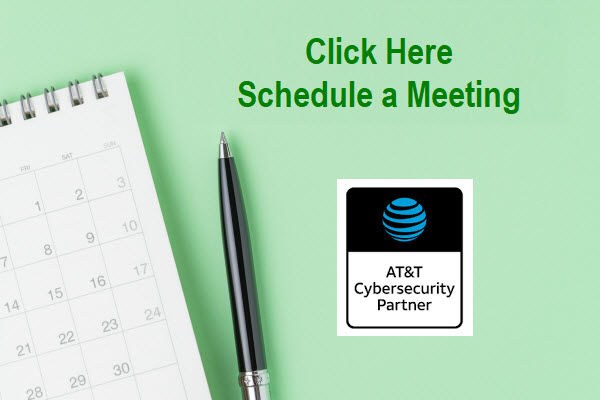
60% of small to medium businesses shut their doors after a data breach; the fines destroy their finances.
What You Need to Know about Modern Identity Security
Posted on February 11, 2019 by Ben Canner in Best Practices
Every business should select, deploy, and maintain a modern identity security solution on their network. If we can convince you of nothing else, we hope you acknowledge that reality. Identity security no longer qualifies as a mere accessory to your business processes; you must think of it as a necessity.
Why Modern Identity Security Matters
Our above edict applies whether you manage the network of a global enterprise or a small business. In fact, somewhere between 58% and 61% of all data breaches affected small businesses. Last year alone saw the breach of millions of users’ records, financial information, and credentials.
Without a modern identity security solution in place, your enterprise suffering a data breach becomes almost inevitable. In turn, the costs of suffering a data breach could prove disastrous; even a small breach can cost over $1 million in total. The average breach can exceed $7 million in total, not necessarily including specific compliance failure fees, legal fees and payouts, and offering breach victims free credit monitoring.
60% of small to medium businesses shut their doors after a data breach; the fines destroy their finances.
Why does deploying and maintaining a modern identity security solution help prevent enterprise data breaches? What do their capabilities provide your business, and how does it positively impact your business processes?
Modern Identity Security Capabilities
At its core, modern identity and access management platforms must handle provisioning, deprovisioning, and modifying user access from a central network location.
- Provisioning refers to giving initial permissions to an employee when they first enter your workforce.
- Deprovisioning, in turn, refers to removing all of the permissions from an employee’s account when they leave your employ
- An IAM solution should also help you evaluate and adjust through role management the permissions your employees have as they change roles and position during their employ with your enterprise.
You should consider all three of these capabilities absolutely necessary for your enterprise. Limiting the permissions individual users possess often proves the best way to prevent a security threat from taking hold; it prevents the damage a stolen password can do and limits the likelihood of an insider threat.
A modern identity security threat should also allow your IT security team to mandate a certain level of password complexity (for reasons we’ve explored in detail in previous articles). Other key capabilities include:
- Identity governance and administration
- Privileged access management
- Multifactor authentication
- Active Directory
- Single Sign-On
- Behavioral Analysis
Privacy Still Matters, Even in B2B Enterprises
Many enterprises don’t see the connection between modern identity security and digital privacy, especially if they don’t operate as a B2C business. This line of thinking often hinders enterprises IAM efforts in the long term.
Having modern identity security on your network doesn’t just protect customers. It also protects your employees’ and privileged users’ personal identifying information (PII). Therefore, it should possess capabilities which fortify this personal identifying information ending up in the hands or under the eyes of threat actors.
Databases containing the personal information of your employees should benefit from the protections of granular multifactor authentication protocols. Additionally, any access requests should take advantage of capabilities which conceal users’ personal identifying information from third-parties.
Teach Your Employees to Value Their Credentials
Would you give a random stranger your social security number? Or perhaps your bank routing numbers? How about your home address?
Obviously, you and 99% of sensible people would never dream of handing this information out freely. However, users often feel more cavalier about sharing their credentials and passwords—with third-party applications and with their colleagues. Usually, this creates scenarios in which hackers and insider threats receive credentials from their victims willingly, through accident or deliberate action.
Modern identity security solutions must accommodate and anticipate the needs of your users. Unfortunately, as much as we’d wish cybersecurity could function as a top-down decision and policy, you do need a consistent and widespread level of employee buy-in for optimal performance.
Without that buy-in, employees will continue to treat their credentials poorly and will develop work-arounds for your IAM solution.
Take the steps to demonstrate how your identity security solution works to your employees. Furthermore, educate them as to why you put these procedures and protocols in place. Demonstrate and emphasize the threat a breach poses to your enterprise, and highlight how employee behaviors can positively or negatively affect it.
Awareness brings about behavioral changes, both subtle and overt. Take advantage of these changes in your modern identity security.
The Cloud! The Cloud!
How fortuitous linguistically that so many enterprises wish to ascend to a new place in the digital marketplace by going to the cloud.
Many enterprises wish to undergo their digital transformation but fail to realize the cybersecurity responsibilities that come with such a transformation. To put it bluntly, cloud providers do not carry the burden of responsibility, even if you use their services. Instead, it stays with you.
Traditional perimeter security solutions like a legacy endpoint protections won’t have the capabilities necessary to safeguard you in the cloud. Therefore, you need to strengthen, not weaken, your identity and access management when you go to the cloud as identity becomes the new perimeter.
Embracing a modern identity security solution provides you with the MFA and identity governance capabilities which should strengthen your new perimeter in the cloud. This should control which users have what access when on the cloud and ensure the legitimacy of those users when they request access.
Modern identity security is not a meaningless expense. It might just end up being the best investment you make this year.


